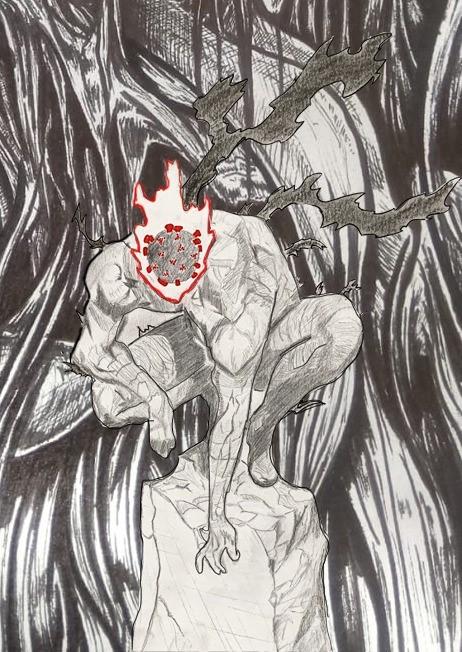


A brief note from
Thisisthethird,andperhapsfinal,editionofHookeinIsolation. Ofcourseanobligatorythankstoanyonewhocontributedtothis edition,andareminderthatwe’realwayslookingfornewarticles! We,asmuchaseveryone,areverymuchlookingforwardto theeasingofrestrictionsinthenearfutureaswellastheupcomingsummerholidays.However,itisimportanttorememberthat theCovid-19pandemicisfarfromgone,andwestronglyrecommendreadersmaintainsocialdistancingandfollowgovernment guidelines.WehopenottobemakinganotherHookeinIsolation!
Editors: Ben Weiss and Ethan Kang
CoverArt:SinanAramaz
2 Contents Our genes’ response to drugs 3 Using AI to diagnose disease 6 Is ageing a disease? 8 Asymmetric encryption 10 Frequently asked science questions 11 Cryptic crossword 13
the
editors:
Ourgenes’responsetodrugs
Zara Hussein
With the NHS doling out an average of 20 prescriptiondrugsayearforevery woman, man, and child in the UK, it might make you wonder - are we taking too many pills for our own good? There’snoquestionthatmodern medicine has touched the lives of us all profoundly, but as a consequence, we now seem to think that even the most minor of health inconveniences is deserving of yet anotherquick-fixprescription. And when it comes to prescriptions it’s a dual problem: patients are too quick to ask, and doctors are often too quicktogive-ultimatelyleaving us with cupboards full of wasted medicines that our precious NHS is struggling to payfor.
Paradoxically,thisisalsocostingusourhealth;prescription drug overdoses kill more people than heroin and cocaine combined. But even if we use themresponsibly,1in15hospital admissions is linked to “adverse drug reactions”(ADRs)–thepotentially fatal side-effects of taking ‘safe’ doses of medicines that simply weren’t right for our bodies. There is a solution to this, however, and it lies in “precision medicine”. Precision medicine is, at its core, about matching the right personwiththerightdrug.
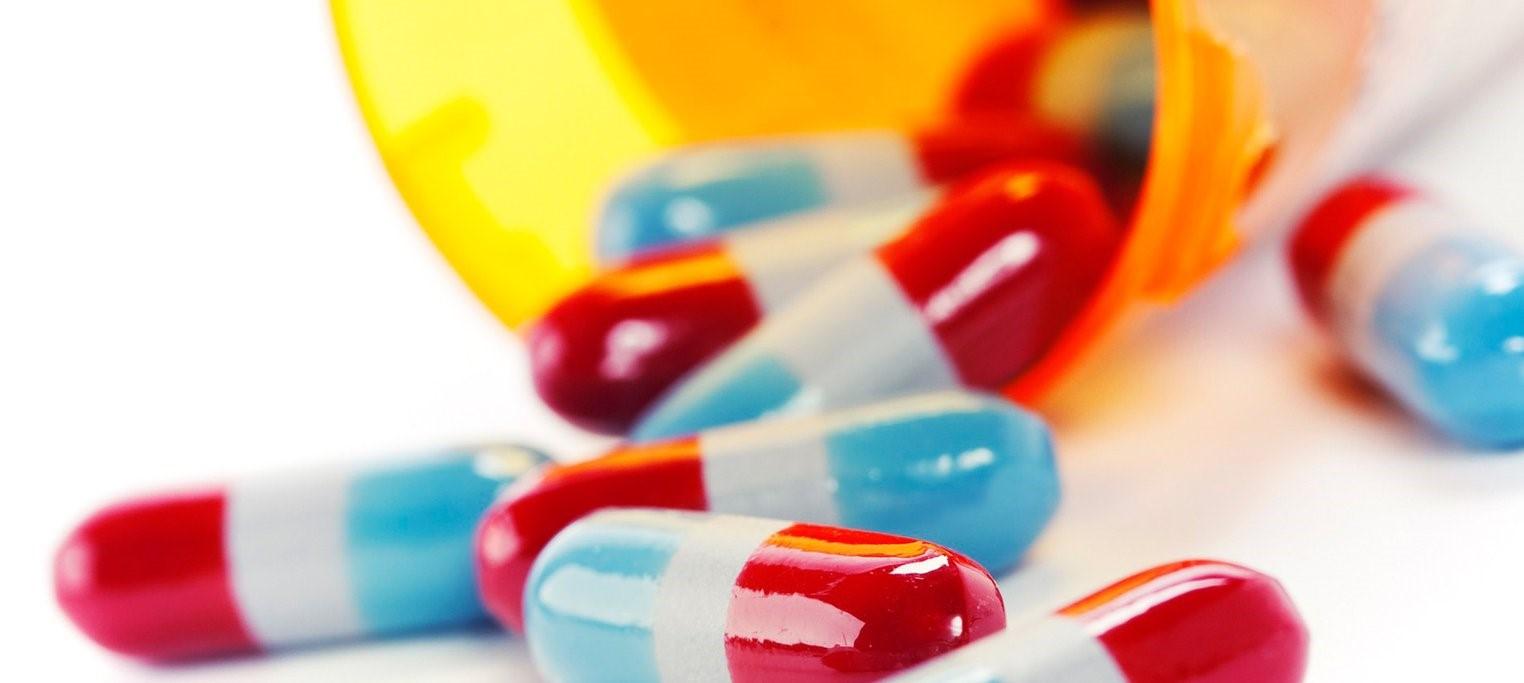
It is a fact that any particular medication is only effective in 30-60% of people who take it –butwhydoesn’tthissitright withourintuition?Withscientific knowledge and innova-
tion accelerating at breakneck speed,everydaymedicalpractice is lagging behind. It still operates under the age-old assumptionthatadrugshould workthesameforallpatients. Infact,theassumptionofonedose-fits-all is so deep-rooted that it is hard for even the most brilliant of our doctors to shake it off. Despite being amongst the most knowledgeable in the world on the cutting-edge science behind drug response, in his Ted Talk, Dr Russ Altman, a Harvard graduate professor of biotechnology, genetics and medicine at Stanfordadmittedthatifapatient called him up to say a medication wasn’t working, even he would occasionally fall victim to the physician’s default instinct: to suspect they either failed to take it
3
from every corner of the world to sequence the human genome. Today, you can get yours done for the equivalent oflessthanathousanddollars with the results arriving at your fingertips faster than your next-day delivery service. Your genome is your complete set of DNA, specifically your genes, which contain all the information needed to build and maintain your unique body. All humans are 99.9% genetically identical, butthistinymarginfordifference is responsible for the striking diversity across our species - in physical appearance, but also, as we are beginning to discover, in the internal biochemistry of our bodies.
This is principle is the bedrock of “pharmacogenomics”an emerging science at the forefront of precision medicine.Pharmacogenomicsstudies how the genetic differences between us result in variation in the way we respond to the same drug. The hope is that this growing knowledge will soon enable doctorstobrowsethegenome of an individual patient and, based on their particular genetic characteristics, select the drug and the dose that works optimally for their body and is least likely to cause side effects. It is true that there are other factors influencing a person's response to medicines, such as
lifestyle, age, and environment, but understanding an individual's genetic makeup is the key to creating personalised drugs that are both effectiveandsafe.
Togetabettergraspofthescience involved in pharmacogenomic research, the following case study will walk you through what happens in thebodiesofthree individuals who all respond very differentlytothesamedrug.
Three friends, Tom, Lucy, and Maya have all been suffering from persistent headaches following a heavy metal concert they attended last night. Lucy, whooftengetsheadaches,digs outherusualfixofcodeine -a common painkiller prescribed for her by her GP a while ago. The instructions list the recommend dose as one pill, and pain-relieving effects are expected within an hour of ingestion. She takes a pill and assures Tom and Maya, who had not taken codeine before, that it gets rid of headaches fantastically,sotheytootakea pilleach.
Indeed, an hour later, Lucy’s headache has cleared. Tom, however, feels no difference and insists the drug didn’t work. Maya’s response appearsevenstranger;almostas soon as she had taken the pill she describes feeling asudden rush of exhilaration and positivity that made her forget all about her headache, but this
only seemed to last a few minutes before wearing away and leaving her feeling exhaustedandnauseous.Howdo weexplainthis?
WhenLucyswallowsthepill,it entersherstomachandisbroken down by acidic gastric juices, releasing the codeine molecules inside it. Next, the free codeine molecules travel through her small intestine andpassintoherbloodstream viaitsthinwalls.
Interestingly, codeine itself is very inactive. It is classed as a “prodrug” meaning it has no effect on the body unless it is broken down into a new chemical – in this case, morphine, a very effective painrelievingcompound.Morphine can be highly-addictive and it isresponsiblefortheeuphoric relaxation effects associated with drugs in the opioid family, suchasheroin andfentanyl - codeine’s much stronger relatives.
The codeine molecules arrive at Lucy’s liver which contains various drug-metabolising enzymes – these are proteins that break down drugs to produce molecules with just the right structure to bring about the desired effect in the body.
Inthiscase,anenzymenamed CYP2D6springsintoaction:as soon as it detects codeine it starts breaking it down into morphine.
4
Weallhaveagenecontainingthe instructions that our body needs tomakeaCYP2D6enzyme.However, just like the rest of our genes, it can come in a variety of slightly different forms commonly known as alleles. Every one of our genes is actuallyrepresented by two alleles (since we inherit one from each of our parents) andthesehaveacombinedeffect. The shape of the enzyme, and therefore its metabolising ability (since having a very particular shape is key for an enzyme to work effectively), is determined by this combination of alleles. Now, because there are so many possible CYP2D6 alleles, for simplicity they can be put into three categories-functional,decreased function, and non-functionalaccording to the effect that each allelewillhaveontheen-
zyme made. Then, taking into accountthecombinedeffectofboth alleles, based on our enzyme’s abilitywecanbe“poor”,
intermediate”, “rapid”, or “ultrarapid” metabolisers for any drug that is metabolised by CYP2D6 –which is, in fact, 25% of all prescribeddrugs!
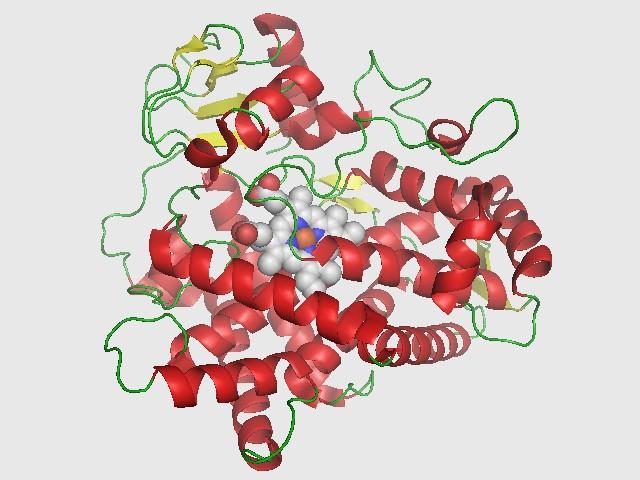
Lucy, who had a textbook response to the codeine, is a rapid metaboliser. This is the case for thevastmajorityofpeople,andit requires at least one functional allele.Prescriptiondosesareusually determined according to the most common response within the population to any particular drug, so for mostpeople a standard dose of codeine should work asexpected.
However, this is not the case for Tom. Like 10% of the population hehastwonon-functionalalleles, making him a poor metaboliser. This means that his CYP2D6 enzymesdonotworkatall,codeine is not converted to morphine in his body, and no pain-relief effects can be felt. Further, this means that for Tom, any drug
needing to be broken down by CYP2D6 would also be ineffective.
Finally, Maya. She is among an even smaller percentage of the population who are ultra-rapid metabolisers. As result of a gene duplication, she has three functional alleles for her CYP2D6 gene instead of two. This extra set of instructions causes her body to produce far more enzymes than normal, making the break down of drugs to release their active compounds much fasterandmuchmoreefficient.In Lucy’s case, only about 10% of the codeine that enters her liver getsbrokendownintomorphine. But despite ingesting the same amount of codeine as Lucy, Maya’smanyefficientenzymeswork to quickly release dangerously high amounts of morphine. This surge explains why Maya momentarilyexperiencedtheheroin -likeeffectstypicalofamorphine overdose. However, as morphine progressivelybuiltupinherbody it had a toxic effect, damaging healthy body tissue. The nausea and severe tiredness she experienced were just a by-product of the destructive ADRs occurring within her body. For people like Maya,astandarddoseofcodeine couldrepresentapotentiallyfatal overdose, or a gateway into addiction.
To be able to kickstart the era of precision medicine the right way it is imperative that we all, as its future patients, do our bit to understand the unprecedented science, technology and ethics underpinning it. Our opinions have thepowertoshapeitscourse.
5
Structure of CYP2D6
“
UsingAItodiagnosedisease
Stefan Sarmo
Recent developments in machine learning and deep machine learning are beingconsideredforthefutureof disease diagnosis. Two of the most promising programs include a program that diagnoses Parkinson’s from various motor test results collected by iMotor and a programme that has been shown to outperform current radiology methods in diagnosing breast cancersfromamammography.
In recent times the question on AI in disease diagnosis seems to have shifted from “will it be used?” to “should it be used?” as studies become more and more promising for the use of AI. Though recent developmentsmaysolvemany issues such as the lack of radiologists/doctors in the UKand diagnosisinremoteareas,they alsoraisepotentialissuessuch as over-diagnosis and patient mentalwelfare.
Detecting Parkison’s
An article discussing recent studies published online on the 14th May 2019 aimed to provide preliminary evidence that artificial intelligence systems may be able to distinguish between a healthy volunteer (HV) or a patient with Parkinson’s disease (PD)
and if the motor afflictions wereinan“on”or“off”state.
The end goal of this programme was to be able to diagnosePDpatientsusingdata collected from finger tapping tests collected by an app suchasiMotor.Thiswouldenable remote and reliable diagnosis, reduce wait times for diagnosis appointments and ease the burden on under mannedhospitalworkers.

How does it work?
The data collected from the iMotor is stored into three datasets: The first dataset is produced from the two-target fingertappingtest:(tappingof theindexfingeronthescreen). The second dataset is produced from the pronationsupination test (tapping your palm on the screen). The last datasetisReactiontimetest.
Screenshots of the iMotor finger and hand tapping tests used to collect data
Thisiswheretheactual programme comes in, a classification model of a neural network is used to analyse all three datasets and weigh their importance accordingly, then basedoffallthedataitisgiven the programme will try to tell ifthepersonhasPDorisaHV and if they are a PD patient, more specific things about their condition. A cluster of Intel machines running Linux wereusedtoconducttheanalysis.
Results
Theresultsofthestudy were quite promising, the algorithm managed to discriminate HVs from patients with PD with 93.11% accuracy and identify the “on” vs “off” state with 76.5% accuracy. However, the size of the study was quite small with only 19 patients with PD and 17 HVs. This programme was only intended for a study, but it demonstrates the potential of the many others in development.
6
Detecting Breast Cancer
Every year, 11 500 women and 80 men die from breast cancer intheUKalone.Tohelpimprove the situation, Google Health and Imperial College are working on making an AI that can diagnose breast cancer from a mammogram. This would help the estimatedshortageof1000radiologists in the UK as well speed up the diagnosis and hopefully reducemisdiagnosis.
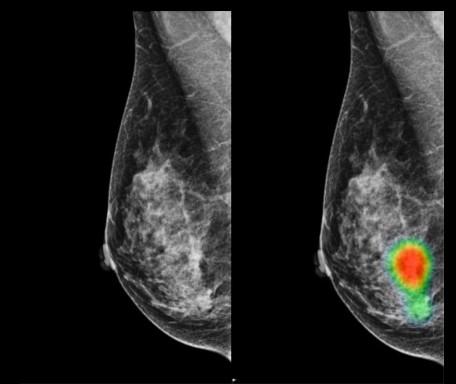
How does it work?
The algorithm was trained wasdesignedandtrainedwithx -rayimagesfromnearly 29000 women. The algorithm outperformed 6 individual radiologists andwasonparwiththecurrent systemoftworadiologistsworking together. However, even moreimpressivelytheAIdidnot have access to patients past medicalrecords.
So, Should AI Be Used?
While this is just a research studyfornow,whenitisusedin hospitals there would still be one radiologist working alongside the AI. This would still effectively double the number of available radiologists but would comewithafewextraperks:the AI is tireless and once in place would provide substantial savings. Lastly, a radiologist normally takes over a decade to train and their lifetime experience is not really passed on whentheyretire.
There are still a few ethical and legal issues that need to be addressed. Firstly, while the AI identifies more cancers this is not necessarilybetterbecauseit is already controversial as to what constitutes a cancer, especiallyintheearlystages.Assoon asyoudocallsomethingcancer, it triggers a chain of medical intervention that can be painful,
costly, and life changing even if the person could have lived a healthy life regardless. An AI programme will also in most cases not be able to explain its diagnosis in a way that we can understand which could cause patientsmuchfrustrationincasesofmisdiagnosis.
Inconclusion, it isundeniable that AI has a place in the future of diagnosis but there are still side (non-technical) problems thatneedtobedealtwithbefore it appears in day to day medicine. Soon, I believe that AI programmes will help save more lives, which is ultimately what mattersmost.
References:
Parkison’s detection:
PR Newswire, ‘Apptomics' ClinicallyValidatedDigital PlatformE.V.ACompletesFirst Sub-StudyforEssentialTremor
Breast cancer from mammograms:
BBCNews,‘AI‘outperforms’ doctorsdiagnosingbreastcancer
Issues with over-diagnosis: TheVerge,‘WhycancerspottingAIneedstobehandledwithcare’
Mammograms of a 49-yearold woman with carcinoma used in a more recent AI study
7
Isageingadisease?
David Lee
Dying happens all the time. It’s a fact oflife.Hopefully,youweretold as a kid that you are going to die,but nothow,when or why. This is understandable, as there are so many ways that you can die; the list is stupendously big andI’m not goingto bother listing any. But even if you are able to avoid all the ‘miscellaneous’ ways of dying, over time, your body weakens, and death eventually catches up to you. We all consider this to be a natural process, something that is inevitable, but a growing number of scientists are voicing their disagreement overthis.
Moon jellyfish, aurelia aurita, are also called ‘the immortal jellyfish’ thanks to their ability to ‘ grow younger’. They begin as a polyp, but after going through metamorphosis, become a medusa – the form that most people associate jellyfish with when they think aboutthem. Thismetamorphosis process is not a one-way street, hence their ability to ‘ grow younger’. Biologically speaking,thismeansthatmoon jellyfishhavetheabilitytoconvertspecialisedoldercellsback intowhattheywereinthepast.
Of course, jellyfish still die; fish, turtles and even humans like to eat them. But this
information sparks to life a new world of possibilities. What if there is a way to transport our malfunctioning frailbodiesbacktotheiryouthful strength? Well, that’s what Shinya Yamanaka won a Nobel Prizeforin2012.
Life for humans begins with a sperm and an egg cell.
As you probably know, these cells fuse together to form zygote, which eventually divides to become an embryo. Both a zygote and the embryo are made from embryonic stem cells. These cells are undifferentiated, which means they have the potential to become anycellinthehumanbody,and thesecellsdivideandspecialise (into skin/hair/brain cells etc.) toformthehumanbody.
Shinya Yamanaka discovered four genes, which when inserted into skin cells from adult mice, resulted in these skin cells into turning intoembryonic-likecells.Thescientific community was astounded. Although this was carried out on skin cells from adult mice, this was still proof of concept of the potential to reverse ageing in humans. The fervourwassogreatthaton12 September 2014, a woman with macular degeneration underwent a trial using this technology.
Researchers took skin cells from the patient, applied the four factors and differentiatedtheminto Retinal Pigment EpitheliumSheets.Afterinserting these RPE sheets back into the woman’s right eye, researchersnotedthatthedegeneration seemed to have come to a halt, and her vision was reported to have become brighter. However, this trial was stopped, due to the presence of mutations within the RPEsheets.
WhatI’vejustdescribed concerning the human trial is somewhat disappointing and anticlimactic. However, fascinating and successful work on thereversalofageingwasdone by Professor David Sinclair. He conducted a study, in which he was able to ‘reverse age/injury -inducedblindness’inamouse. In order to do this, Professor Sinclair applied only three out ofthefourgenestoretinalganglion cells of an old blind mouse suffering from glaucoma,andthisrestoreditsvision. (Ifhehadappliedallfourofthe genes, then the mouse would have had a tumour in the back ofitseyes).
8
We still have a long way to go. In fact, we are not even sure what causes ageing. Inthemiddleofthe19th century, it was believed that the accumulative damage caused by mutationsofourDNAresulted in ageing. Now, some people believe that ageing is a product of the accumulative damage of our metabolism, and there is another theory that ageing is caused by the loss of epigenetic information. But let’s focus on what we have learnt. What we have learnt is proof of concept. We can fight ageing and it’s not inevitable. But what we need now is attention. We need more people andmoretimetoworkonthis, and maybe this is the way for humanstolivelonger,happier andhealthierlives.
References:
https://thebiologist.rsb.org.uk/biologist/158-biologist/ features/1510-everlasting-life-the-immortal-jellyfish

https://www.nature.com/news/how-ips-cells-changed-theworld-1.20079
https://www.biorxiv.org/content/10.1101/710210v1.full
https://www.cell.com/cell/fulltext/S0092-8674(06)00976-7?
_returnURL=https%3A%2F%2Flinkinghub.elsevier.com% 2Fretrieve%2Fpii%2FS0092867406009767%3Fshowall% 3Dtrue
Sinclair,DrDavidA.;Lifespan:WhyWeAge–andWhyWe Don’tHaveTo.HarperCollinsPublishers.KindleEdition.
9
Moon jellyfish, aurelia aurita
AsymmetricEncryption
George Weston
Asymmetric encryption was first thought of by Whitfield Diffie and Martin Hellman in 1976. Theyenvisioneditasawaytosolve thekeydistributionproblemwhich previously troubled symmetric encryption. In symmetric encryption, thereisonlyonekeyused.Thiskey is used both to encrypt the plaintextandtodecrypttheciphertext. Therefore, the key needed to be exchanged between the two communicating parties called Alice and Bob. The problem was that an eavesdropper called Eve could intercept the key and use it to decrypt any ciphertext that she also gotaholdof.
Asymmetric encryption/Public-key encryption is considered to be a much better mechanism and is where the keys come in pairs, thus solving the key distribution problem. Each user has a public and a privatekey.
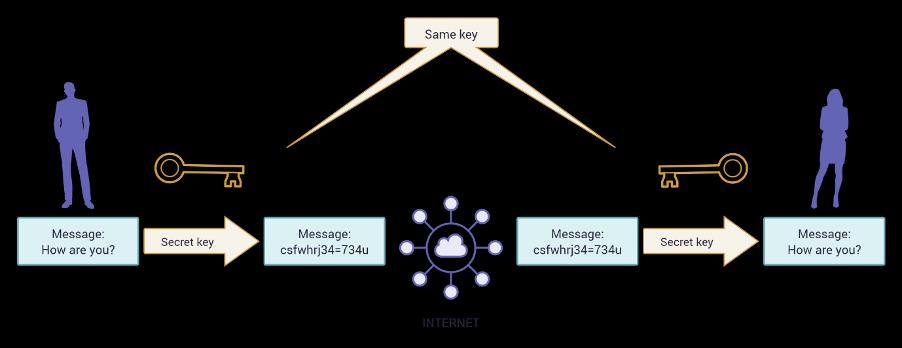
Asymmetric encryption can be used the same way as symmetric encryption to encrypt and decrypt messages. The public key can be used to encrypt the plaintext. The private key is used to decrypt the ciphertext. As can be guessed from their names, the public key is distributed and available to everyone
whilst the private key is only knownbyoneparty.Thisway,anyone can, for example, encrypt a messageforAlicewhilstAliceisthe only one who can decrypt these messages. If Alice is careful, Eve will never get a hold of her private key and will only know her public key. Currently it would take too long (hundreds of years) to work out a user’s private key from their public key so asymmetric encryptionisaverysecuremechanism. Apartfromencryptinganddecryptingmessages,anotheruseofasymmetric encryption is digital signatures in which a user signs off a messagewiththeirprivatekey.The recipient who has access to the user’s public key can verify that the message came from the user. The proves that the message has not been altered. A variation on this mechanism is also applied when using Bitcoin as outlined by the mysterious Satoshi Nakamoto in his infamous Bitcoin white paper. When transferring bitcoins, the current owner signs with their private key to prove ownership of the bitcoins, and the public key of the new owner is attached as well to show whom the bitcoins are being sentto.
Asymmetric encryption is a concept but one of the first techniques to actually make use of it was RSA gettingitsnamefromthesurnames of Ron Rivest, Adi Shamir, and Leonard Adleman. The problem that RSA was tackling wasthe generation of the public key and privatekeypair.Thesekeysneededto be related; however, in order to make the system secure, it also needed to be very hard, i.e. take a very long time (hundreds of years) for an eavesdropper to work out theprivatekeyfromsolelythepublic key. To accomplish this, RSA makes use of large prime numbers to generate the public and private keys.
Despite the security benefits of asymmetric encryption, there are still some modern-day applications for the older system, symmetric encryption. Symmetric encryption is a much faster process, so it is preferred when encrypting and transmittingdatainbulk.Forthese uses, asymmetric encryption is simplytooslow.Otherapplications including the SSL protocol and WhatsApp, use a mixture of both formsofencryption.
10
FrequentlyAskedScienceQuestions
George Weston
“What is graphene?”
Graphene is an allotrope of carbon that is a single layer of graphite. Despite being so thin, graphene is very strong in contrast to graphite, and graphene is even stronger than diamond. This is due to the strong bonds between the carbon atoms (Graphite is not strong because of weak forces between the layers). Graphene is also a very good conductor of electricity better than even copper and almost as good as superconductors (these need to be cooled down to low temperatures, but graphene conducts almost as well even at room temperature). This is because normally each carbon atom has 4 bonds but in graphene, each carbon atom is bonded to three other atoms leaving 1 electron available in the third dimension for electronic conduction.
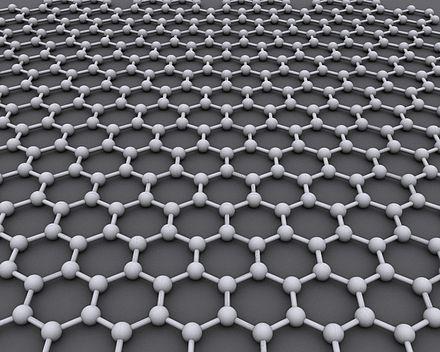
“What causes a supernova?
According to NASA, supernovae are the largest explosions that take place in space. One way in which a supernova happens is after a massive star becomes a red supergiant. Eventually it is not possible to fuse iron into other elements and release energy, so the star runs out of fuel. The gravitational force is therefore much greater than the force due to the radiation pressure so the star collapses inwards on itself. This results in a supernova, a huge explosion expelling matter into space. After a supernova, the star either becomes a neutron star or a black hole depending on the mass of the core.

11
”
The Crab Nebula, a supernova remnant in the constellation of Taurus
“What is plasma, the fourth state of matter?”
Plasma is the fourth state of matter, next after gas. Plasma occurs when the electrons in a gas are stripped from their nuclei. This ionized gas contains free electrons so plasma can conduct electricity. Plasma is found naturally in lightning.

What is the difference between bosons and fermions?
There are two fundamental classes of particles: bosons and fermions. To understand what differentiates these two classes, we have to understand what spin is.
Spin is an intrinsic property of all elemental particles and it is a quantum form of angular momentum. Bosons have integer spins. Fermions have half odd integer spins. Interestingly, bosons can be thought of as force carrying particles that mediate the interactions between fermions, which can be thought of as matter particles. A notable fermion is the electron whilst a notable boson is the gluon (the carrier for the strong nuclear force).
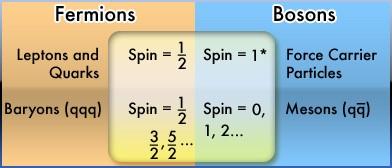
12
Cryptic Crossword:

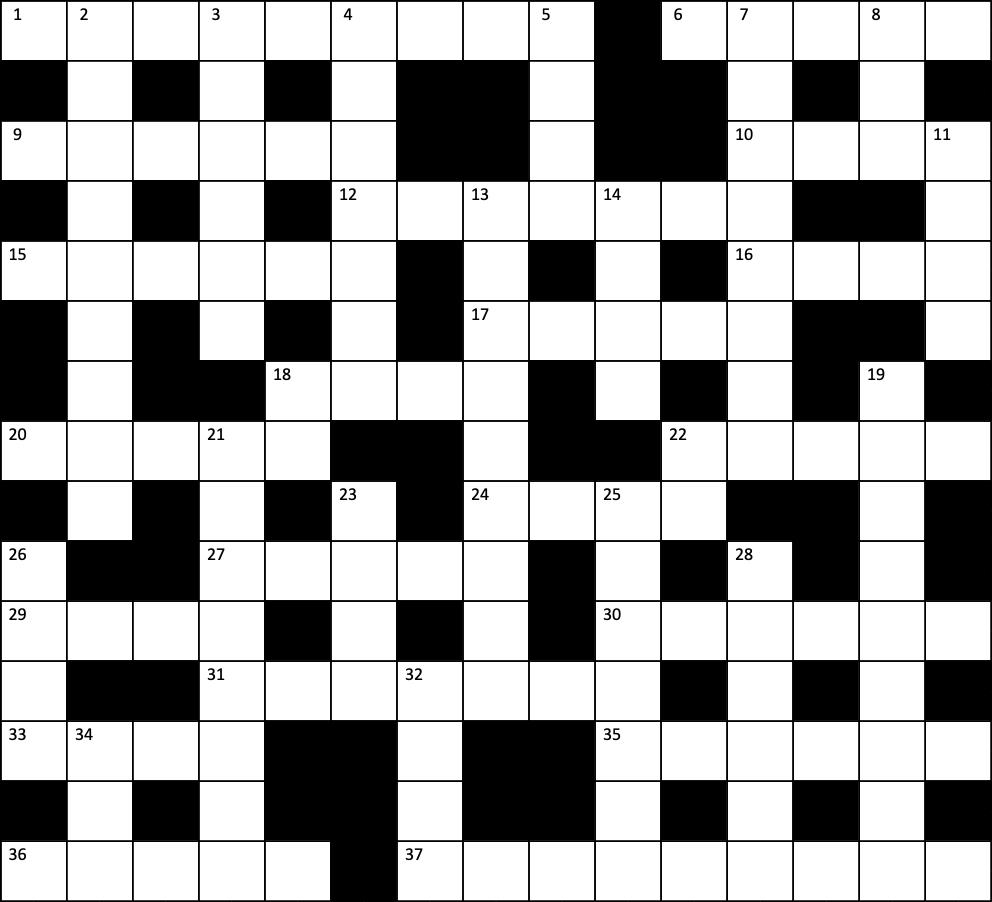
ACROSS:
1 C2HO2 manufactured before adding Lanthanum and Tellurium to make addictive snack (9)
6 Drunkard reverses in ship towards glacier (5)
9 Blood types right for one's arteries (6)
10 Organ sounds self-aware (4)
12 Ritual at home, naturally (7)
15 Friend of bear with odd eyes long ago (6)
16 First person, now in the morning (4)
17 Stage 1: day before, put in case of luminol (5)
18 Seventh day following inclusion in Urdu task (4)
20 How the French young take on water? (3,2)
22 Final letter, love? Great! (5)
24 Sounds like seven days wasted (4)
27 Embarrassed after Ullathornes's head gets old skin condition (5)
29 Lost fish: in retrospect a bad sign (4)
30 OWs take double salt to Northen Ireland (6)
31 Chase after male bovine or canine (7)
33 King Einstein's first irrational hat (4)
35 Got on horse again after error, disheartened and mixed with dull emotions, principally (6)
36 Check verticality of lead around chimney (5)
37 Water down oddly abnormal amnesia (5,4)
DOWN:
2 What governs RHSC's operations under Mr Ullathorne? (6,3)
3 Beware non-universal charged particle (6)
4 He's into avarice, but only the most attractive will do! (7)
5 Priest doubly heartened goddess of old (4)
7 Volunteer thanks about new endless mass of element (8)
8 Signal over in six dots (3)
11 Mixes lemon endlessly - what a muppet! (4)
13 Looking back, Scooby used to be another breed or material (5,4)
14 Griddle set with overlapping articles (4)
18 One of six flavours in School? (2)
19 Dinosaur's undoing was mixing it with top-grade oxygen (9)
21 What came before Copernicium, element 112? (8)
22 Alright at absolute zero! (2)
23 Prison made of polysaccharides? (4)
25 What makes Richard Kowenicki kick down chair with ire? (7)
26 Philosopher's detailed mechanism (4)
28 Argument about rough edge down the rabbit hole? (6)
32 Pack animal beheaded for its biological rank (4)
34 General returns fish (3)
13
(AnswerstoWeek2)
Week 3
Created by Mr Coward















